What’s Up?
I had planned to be at Fort DeSoto by now for a week or ten days by now, but with the crane chicks that hatched recently, I am not going anywhere. I’ve been living at ILE for nearly two decades and there has never been a crane family with tiny chicks that was 100% accepting of my presence. The opportunity is simply too good and too amazing to drive away from. A nice benefit of the pandemic 🙂
On my Thursday afternoon walk, I had an ILE first-ever Least Tern fly over the boardwalk. That was followed by the first decent sunset in about ten days. While photographing the chicks every morning and most afternoons, I have learned a ton about crane behavior. Most surprisingly is that they wandered more than 200 yards from the nest just one day after the second chick hatched. And yesterday they expanded that to more than 300 yards and wound up in North Field and then in the marsh north of the pier. The nest is in the marsh about 200 yards south of the pier. My thighs are quite sore again as I spent a good deal of time picking up trash left and right of the pier where the new crane family has been hanging out for the past few days.
The forecast for this morning — Friday 15 MAY 2020 is for northeast winds with clouds developing early. That is pretty good for bird photography.
Thanks to the many who continue to order a variety of educational materials and gear & accessories from the BAA Online Store. Your patronage is appreciated in these unique times. This blog post took more than three hours to prepare including the time spent on the image optimizations.
It is a tough call for sure, but do attempt to pick a favorite from among today’s five featured images. And please let us know why you made your pick. Comments on the good and bad of all of the images are welcome.
Important Note
Blog posts — never more than one every other day — that deal with the current situation in the US (and the world), will include the words Alert: Non-photography-related Post in the title. If you do not wish to read about or discuss the current issues, simply do not open such blog posts. Nobody is forcing you to read the blog. I have lots more important stuff to share and lots more questions to ask. As for those who are disappointed in me or have lost respect for me that is about them. Only I can disrespect myself.
Those who wish to paint me as some sort of conspiracy theorist can keep their heads buried in the sand, ignore solid information from many knowledgeable folks (including doctors), obey all government orders, wait for the COVID-19 vaccine (that is never coming), and line up to have their chips implanted. For those who state that they will never again come to the BIRDS AS ART Blog for the free photography instruction that I have provided for I don’t know how many years — 3044 posts before this one — I wish them only the best.
BIRDS AS ART
BIRDS AS ART is registered in the U.S. Patent and Trademark Office.
|
|
|
Click on the image to enjoy a larger version. The SONY e-Guide by Patrick Sparkman and Arthur Morris |
The Sony Camera e-Guide (PDF) and videos Info
Yesterday I prepared the final PDF for the Sony Camera e-Guide. It will not be available in the store until early next week but you can order yours right now. The cost of the SONY e-Guide is $100.00 US and will include one of the four (4) camera set-up videos — we offer one video each for the a7r iii, the a7r iv, the a9, and the a9 ii — and the written guide with the galleries. Additional camera videos are $25.00 each The guide is now done.
If you would like to order the e-Guide now, please send a Paypal for $100 US to birdsasart@verizon.net and be sure to include the words “SONY e-Guide” in the Paypal e-mail along with the name of your camera or cameras so that you can receive the correct video or videos. Note: please add $25 for each camera video after the first. And please be sure to type your e-mail address into your Paypal order. Then be sure to send a copy of the Paypal transaction to me via e-mail.
SONY 200-600 Update
Steve Elkins now has five SONY 200-600s in stock; one of them surely has your name on it. Contact Steve as below to save $50.00.
Money Saving Reminder
If you need a hot photo item that is out of stock at B&H, would enjoy free overnight shipping, and would like a $50 discount on your first purchase over $1000.00, click here to order and enter the coupon code BIRDSASART at checkout. If you are looking to strike a deal on Canon or Nikon gear (including the big telephotos) or on a multiple item order, contact Steve Elkins via e-mail or on his cell at (479) 381-2592 (Eastern time) and be sure to mention your BIRDSASART coupon code and use it for your online order. Steve has been great at getting folks the hot items that are out of stock at B&H. Those include the SONY a7r IV, the SONY 200-600, the SONY 600mm f/4 GM, and the Nikon 500mm PF. Steve is eager to please.


Gear Questions and Advice
Too many folks attending BAA IPTs and dozens of photographers whom I see in the field and on BPN, are–out of ignorance–using the wrong gear especially when it comes to tripods and more especially, tripod heads… Please know that I am always glad to answer your gear questions via e-mail. Those questions might deal with systems, camera bodies, accessories, and/or lens choices and decisions.
|
|
|
This image was created on 10 MAY 2020 at Indian Lake Estates, FL. I used the Induro GIT 404L/FlexShooter Pro-mounted Sony FE 600mm f/4 GM OSS lens, the Sony FE 1.4xteleconverter, and the 61-MP Sony Alpha a7R IV Mirrorless Digital Camera Body. ISO 1000. Exposure determined by Zebras with ISO on the rear dial: 1/800 sec. at f/6.3 in Manual mode. AWB at 12:32am on a (wonderfully) cloudy day. Tracking Flexible Spot (M) AF-C was active at the moment of exposure and performed to perfection. Image #1: Sandhill Crane one-day old chick standing near adult on the nest |
May 10 — Day One, the Mother’s Day Miracle
If you missed the Mother’s Day Miracle Crane Chick V-log video, click, here to view it and learn the story of that amazing day of excitement and discovery. It is a rare day that I head down to the lake three times …
|
|
|
This image was created on 11 MAY 2020 at Indian Lake Estates. I used the handheld Sony FE 100-400mm f/4.5-5.6 GM OSS lens (at at 277mm) and the 61-mega-pixel monster, the Sony Alpha a7R IV Mirrorless Digital camera body. Exposure determined by Zebras with ISO on the rear dial. ISO 640: 1/1000 sec. at f/7.1 in Manual mode. AWB at 7:27pm on a sunny afternoon. Tracking Flexible Spot (M) AF-C was active at the moment of exposure and performed almost miraculously with the AF point holding on the adult crane’s head! Image #2: Sandhill Crane with 1- and 2-day old chicks. |
May 11 — Day Two
I went to the 100-400 in hopes of making a decent image that showed the tiny chicks with one or both parents to illustrate how tiny they are. I did not give myself much chance. To improve the artistic merit of this image, it underwent extensive clean-up. The natural history of the image, however, is unchanged: two tiny chicks walking in the marsh with one of their parents. I will share the before image with you here at some point for comparison.
|
|
|
This image was created on 12 MAY 2020 at Indian Lake Estates, FL. I used the Induro GIT 404L/FlexShooter Pro-mounted Sony FE 600mm f/4 GM OSS lens, the Sony FE 1.4xteleconverter, and the 61-MP Sony Alpha a7R IV Mirrorless Digital Camera Body. ISO 800. Exposure determined by Zebras with ISO on the rear dial: 1/800 sec. at f/8 in Manual mode. AWB at 7:20pm on a clear sunny aftrenoon. Tracking Flexible Spot (M) AF-C was active at the moment of exposure and performed to perfection. Image #3: Sandhill Crane 2- or 3-day old chick wading |
May 11 — Day Three
Choosing one of my SONY telephoto lenses with which to photograph the still-tiny chicks is a decision based on many factors. With the chicks so, so tame, the 200-600 is always left in my SUV as the minimum focus distance (MFD) of the 100-400 — .98 meters or just over three feet — is a huge plus. In the very early morning or the late afternoon (as with Image #3), the 100-400 does not work for the close-up work if the sun is out because my shadow will fall upon the subjects. It was a thrill to get this bird wading in the deep blue water. Sometimes I head away from the Sequoia with the 600/1.4X on the tripod and the 100-400 on my shoulder via a Black Rapid Curve Breathe Strap. The best of both worlds!
|
|
|
This image was created on 13 MAY at Indian Lake Estates. I used the handheld Sony FE 100-400mm f/4.5-5.6 GM OSS lens (at at 394mm) and the AF King, the Sony Alpha a9 II Mirrorless Digital camera body. Exposure determined by Zebras with ISO on the rear dial. ISO 1600: 1/250 sec. at f/5.6 in Manual mode. AWB at 6:55am before the sun got on the birds on what would become a clear sunny morning. Tracking Flexible Spot (M) AF-C was active at the moment of exposure. I placed the AF point on the right-hand chick’s head and re-composed. Image #4: Sandhill Crane 3- and 4-day old chicks with the adult on a bed of decaying mayfly carcasses |
May 12 — Day Four
I have been mentioning the huge mayfly hatches that have left many tens of thousands of dead ones covering exposed mudflats. The adult cranes, perhaps sensing that one or both of the chicks is tired, will often plop down anywhere inviting them to climb into her feathers — usually from the rear — for a short nap. That is exactly what the adult here was doing when it lay down on a bed of mayflies. I am guessing that the chicks were more hungry than tired as they opted for snacking on dead mayflies rather than resting.
|
|
|
This image was created on 14 MAY 2020 at Indian Lake Estates. I used the handheld Sony FE 100-400mm f/4.5-5.6 GM OSS lens (at at 382mm) and the 61-mega-pixel monster, the Sony Alpha a7R IV Mirrorless Digital camera body. Exposure determined by Zebras with ISO on the rear dial. ISO 800: 1/640 sec. at f/6.3 in Manual mode. AWB at 9:41am on a partly cloudy morning. Tracking Flexible Spot (M) AF-C was active at the moment of exposure and performed perfectly. Image #5: Sandhill Crane chick tight with 1- and 2-day old chicks. |
May 13 — Day Five
I am so, so blessed to have been able to photograph these two tiny, too-cute creatures every day for almost a week now that it is hard to believe. They are so tame that when it is cloudy or the chicks are in the shade, the 100-400 is by far the best lens for the job; partial body images of a tiny chick — are you kidding me? It is 1/3 stop faster than the 200-600 at the long end and the MFD of the 1-4 kills that of the 2-6. In addition, as the family is often moving about, the light weight and the small size of the handheld 100-400 allows me to change position quickly and get down on my butt quickly as needed.
The One Negative of the SONY 100-400mm GM Lens
The one negative of the SONY 100-400mm GM lens is that the zoom mechanism — the lens length changes as you zoom in or out — is not at all smooth. Pretty much every SONY 1-4 that I have handled sticks a bit at about 300mm. It is very difficult to use if you are trying to create a zoom blur. And since the problem has to do with the design of the lens, it cannot be fixed or repaired. The internal zoom mechanism of thee 200-600 G on the other hand, is as smooth as butter.
Note however that the incredibly small minimum focusing distance, the f/5.6 aperture at the long end, and the 100-400’s small size and light weight make it a must-own lens for me. Not to mention flower photography!
If In Doubt …
If you are in doubt about using the BAA B&H affiliate link correctly, you can always start your search by clicking here. Please note that the tracking is invisible. Web orders only. Please, however, remember to shoot me your receipt via e-mail.






Please Remember to use my Affiliate Links and to Visit the BAA Online Store 🙂
To show your appreciation for my continuing efforts here, we ask, as always, that you get in the habit of using my B&H affiliate links on the right side of the blog or Bedfords, for all of your photo and electronics purchases. Please check the availability of all photographic accessories in the New BIRDS AS ART Online Store, especially the Mongoose M3.6 tripod head, Wimberley lens plates, Delkin flash cards and accessories, and LensCoat stuff.
As always, we sell only what I have used, have tested, and can depend on. We will not sell you junk. We know what you need to make creating great images easy and fun. And please remember that I am always glad to answer your gear questions via e-mail.
I would, of course, appreciate your using our B&H affiliate links or Bedfords for all of your major gear, video, and electronic purchases. For the photographic stuff mentioned in the paragraph above, and for everything else in the new store, we, meaning BAA, would of course greatly appreciate your business. Here is a huge thank you to the many who have been using our links on a regular basis and those who regularly visit the New BIRDS AS ART Online Store as well.
Be sure to like and follow BAA on Facebook by clicking on the logo link upper right.
Typos
In all blog posts and Bulletins, feel free to e-mail or to leave a comment regarding any typos or errors. Just be right :).

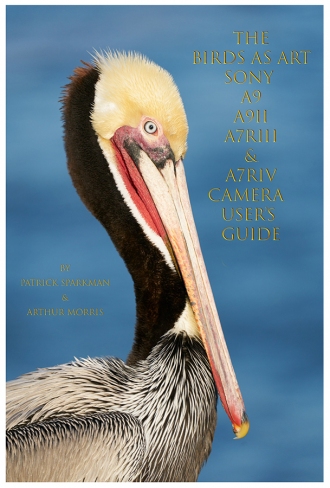
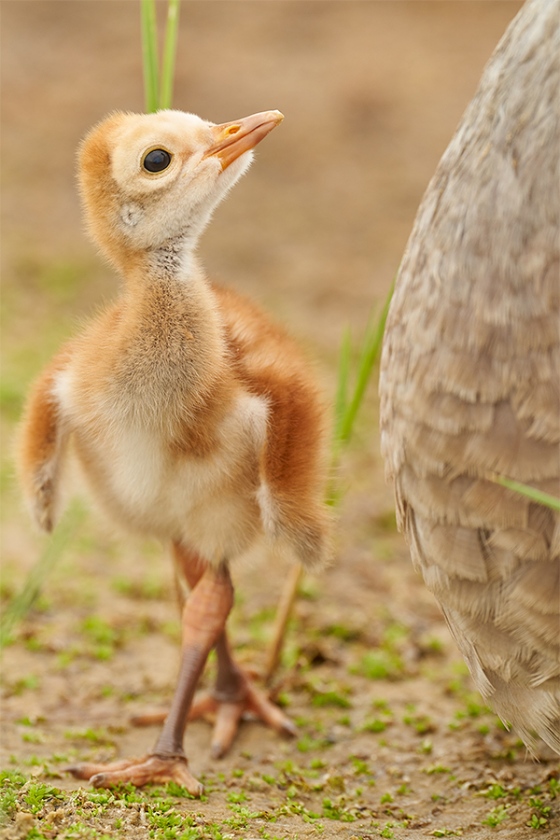
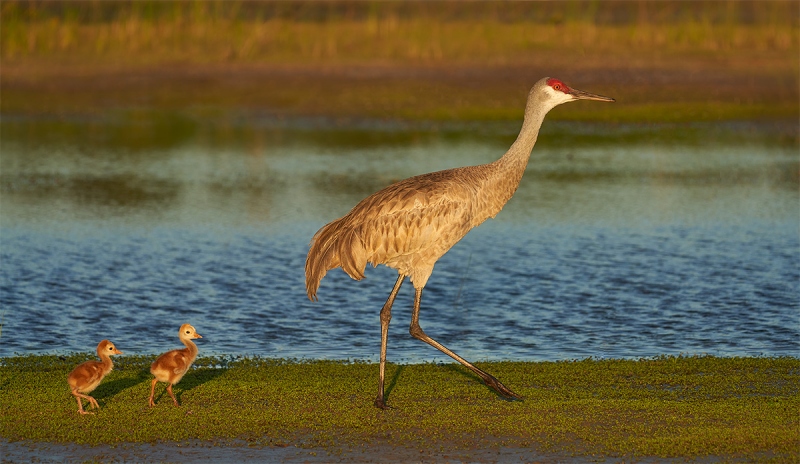
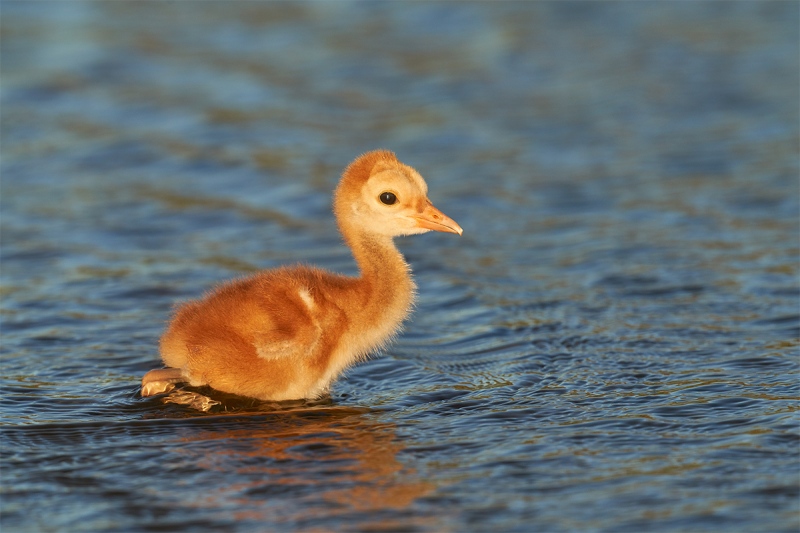
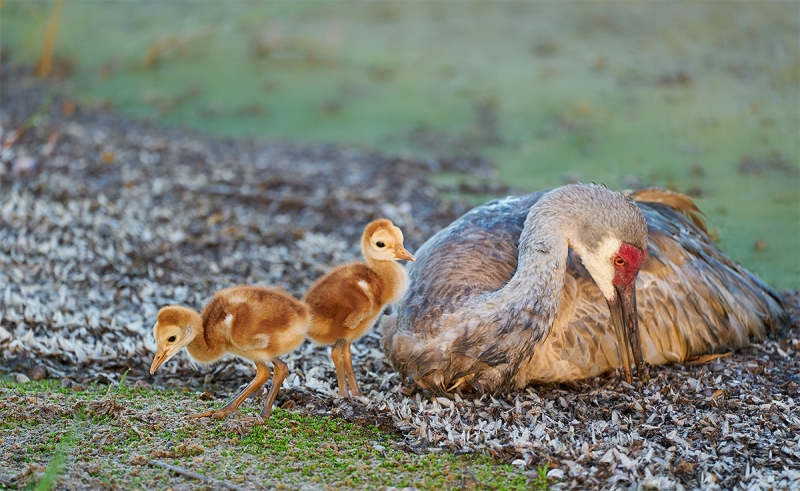
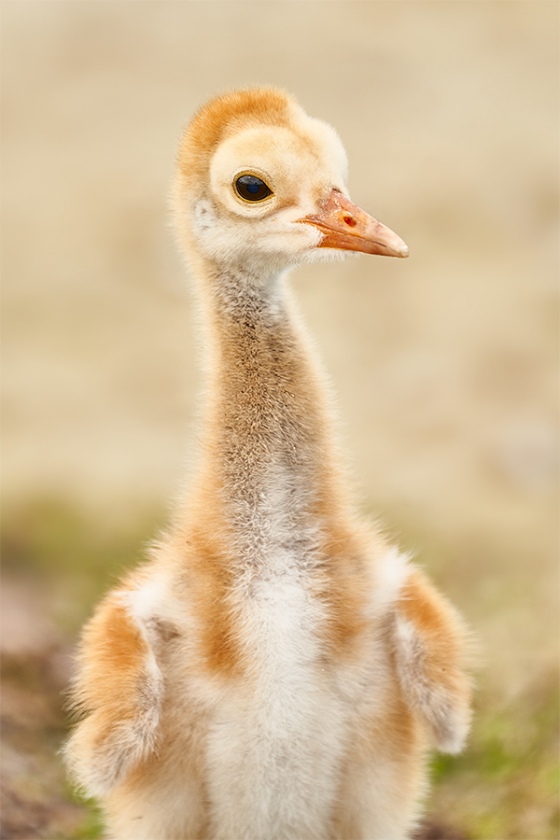













# 1 is my favorite with the crossed legs but I love them all
and your pictures give me joy everyday
stay safe wear that mask wash your hands
I like number 5 best out of a very pleasing set of images.
Beautiful. I would not leave either. thank you for sharing
Artie, you ask a difficult question. All five 0f the images are terrific! Image #1 is my favorite because it looks like the colt has a walking stick and is going on a hike. The angle of the bird’s head and the walking stick cause the picture to stand out to me. It just gives me the appearance of a bird going on a hike. But, all five pictures are great each in their own way.
Peter
Artie: What an incredible set of images. Your deciding not to leave such an opportunity reminds me of the fishermen’s adage: Never leave fish to find fish. Hard to pick a favorite but #4 really is wonderful for me, in part because I don’t think I’ve ever seen a an adult crane sitting down like that. But they all are really superb.
How does the Sony 100-400 compare to Canon’s?
1,2 & 5 great one and all! Thanks for sharing!
Love #1, Artie. You’ve captured the innocence, apparent parental admiration and vulnerability beautifully.
Oh, forgot to ask…do you think the wildlife is tame because there are fewer people around? (because of the pandemic)….
No, not at all. With the lockdown there are far more folks down by the lake than there normally are …
with love, a
Definitely #1 Head angle looking up at mom or dad, wings down position. twisting look over the stride, Perfect !
Just a fantastic set of photos..I love the May 11 & 13. Beautiful mom with her chicks, and May 13 with your classic, in your face, tight and graphic!
I do like #1, but it looks staged, although I know you did not stage it; It was a flip of the shutter that caught that one! Most people will drool over it because of the human stance of the chick, but it’s more cute than natural, IMO. Did I say I liked it? Yes, I did!
Thank you for the post Artie!
Hey, Tony. YAW. It wanted to get fed!
a
Hi Artie,
It’s been a while.
Great opportunity with the Sandhills and no wonder you are hanging around to take advantage of the situation. Can’t believe they are as tame as they are and you can get so close. The parents must be accustomed to humans and are not giving the message to the colts that you are potentially dangerous. It must be a treat for you. RE the images, I have to choose #1. Demonstrates the relationship of chick and parent and not be be anthropogenic, shows the “bond”. IQ is on par with all of your stuff so no comment required there. I did not even notice the grass out of the chicks head when I first looked, so I guess it doesn’t bother me much, but for longer term viewing, personally I would probably take it out but could take a bit of effort right around the top of the head.
Are you still offering the discounts for those who used your B&H links for major purchased. Please recall that I ordered my Sony 600 thru you. Have fun with the Cranes and I for one take no offense in your providing information (differing views) on the virus.
Be safe,
Frank
Thanks, Frank. See my ee-mails.
wtih love, artie
Good morning…
Thanks for sharing your time… spending it on educating us on Crane behavior with your camera… I enjoyed image #1 and image #5… great color blend with image #5… they are both very nice and soft which is appropriate for the picture… the green grass already mentioned on image #1 is a little annoying… but get over that and enjoy the perfect image of the chick… Great job Artie… and thanks for staying with the project and not leaving… enjoy your time…
I agree with Warren, #1 would be perfect without the grass coming out of the chick’s head.
Image #1 and #4 are my favourites, but I went with # 4 as my first favourite. It has a relax feel to it, and I love the poses of all three birds!
I love the look and emotion of #1. Did you consider removing the two pieces of grass coming out of his head? That was the first thing I saw when I saw this image a couple of days ago.
Thanks. Yes.
with love, a
No. 5 for me. Like the head angle and pose of the bird. No. 1 is very close, however, the grass coming out of the middle of the head is a bummer for me. Thanks for sharing.
#5 is my fav. Soft, almost fuzzy feathers makes the chick appealing. Head angle isn’t super, but nice enough to carry the image.
Thanks, Marr. I disagree on the head angle on #5; from where I sit it is pretty much perfect; about 45 degrees usually works very well when the bird is facing us. What would you have preferred?
with love, artie
i would prefer to see more of the far side, Artie.